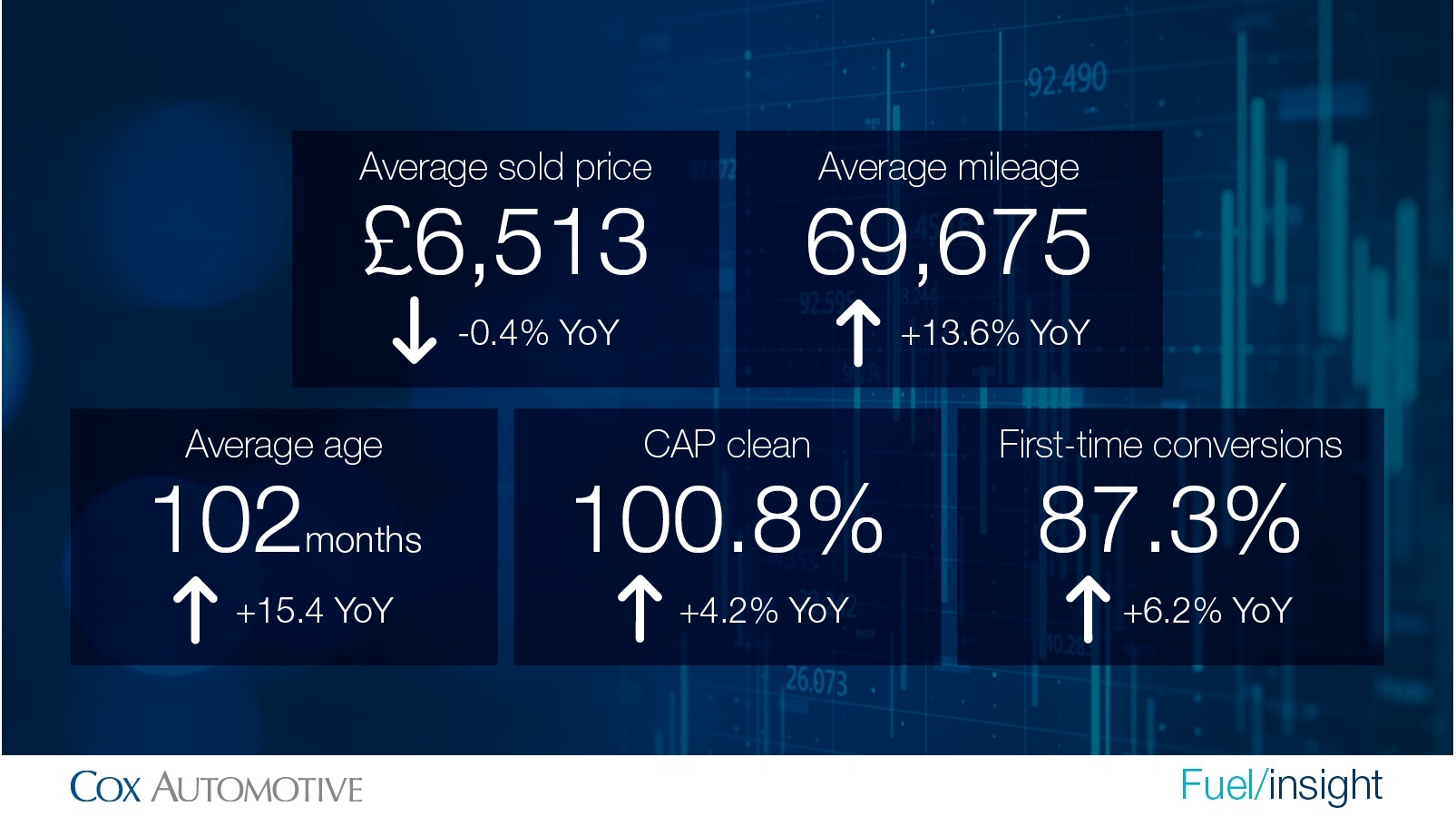
The Cox Automotive monthly market tracker has been published and it features the following highlights:
- Increase in CAP clean conversions
- First-time conversions at a record high
- Very minor reduction in vehicle age and mileage
- Large increases in average vehicle profiles compared to August 2020
- Declining new vehicle registrations throughout Europe

Cox Automotive is urging dealerships to “compromise on stock and lower their usual requirements” as the market continues to struggle to balance limited supply with overwhelming demand for vehicles. With semiconductor shortages set to continue to hamper the new car market until well within 2022 and surging demand for stock driving up auction prices, it no longer pays to be picky about all stock.
A stark picture
In its monthly market tracker for August 2020, Cox Automotive paints a stark picture. Throughout the month, supply and demand imbalance continued to drive up all wholesale key indicators, with CAP clean performance achieving 100% and first-time conversions the highest ever recorded at 87%. A comparison to figures from the same period in 2020 show that average age and mileage is well ahead, up by 18% and 13%, respectively, although they have eased marginally since last month (July 2021: -0.87% and -0.01%).
The only wholesale key performance indicator down on the same time last year is that of the average sold price, which stands at 0.4% lower in 2020. However, this is due to unique circumstances that saw August 2020 become a period of pent-up recovery after retailers re-opened showrooms from June 1st after the first nationwide lockdown. In addition, this year, dealers have enjoyed a longer trading time with physical sites able to remain open. Therefore, the increase has been driven primarily by stock shortages and issues facing new vehicle supply for both consumers and de-fleets.
Time to compromise on stock
According to Philip Nothard, Insight and Strategy Director at Cox Automotive, this rift between supply and demand means that highly sought-after vehicles are not only becoming harder to source but more expensive to purchase, with considerably higher mileage and age than what would be considered the norm.
He suggests that dealers need to find a compromise in order to keep their forecourts filled. With supplies of the new September plates, already lower than average due to the challenges carmakers have had with production and logistics, and stock flying out of auction lanes at high prices, it’s quickly becoming the case that any stock is considered good stock.
A market slowed by new vehicle challenges
When understanding why the wholesale market is in such a precarious position, Nothard says it is difficult to look beyond the troubles experienced by the new car market. Delays in OEM production schedules are driving up demand in the used sector and significantly delaying de-fleet schedules as people hold onto vehicles for longer.
The only glimmer of hope for the new car market was another positive month for electric vehicle registrations. Demand for the latest battery electric, hybrid and plug-in hybrid vehicles surged by 32.2%, 45.7% and 72.1%, respectively. Following March’s changes to the Plug-in Car Grant, demand for plug-in hybrids has outpaced battery electric vehicles in five of the past six months. Nothard says these figures further reflect raw materials challenges in the new car market, which is forcing most OEMs to move production towards EV.
“The industry talks a lot about the semiconductor shortage, and this is likely to last until well into 2022. However, manufacturers face additional raw material challenges, such as the shortages of both rubber and metal. There’s also an inevitable delay caused by OEM’s transition towards electrification. For many, EV is now taking priority and the SMMT’s results demonstrate why this transition is so important”, Nothard added.
European decline
The UK’s new vehicle registration figures for August reflect a wider European struggle, with the region’s market declining by a quarter as a result of increased pressure on supply chains. Spain and Italy were the worst affected countries, with declines of 28.9% and 27.2% year-on-year respectively. France showed stronger signs of recovery than the UK, but still recorded a 15% reduction in new vehicle registrations.
